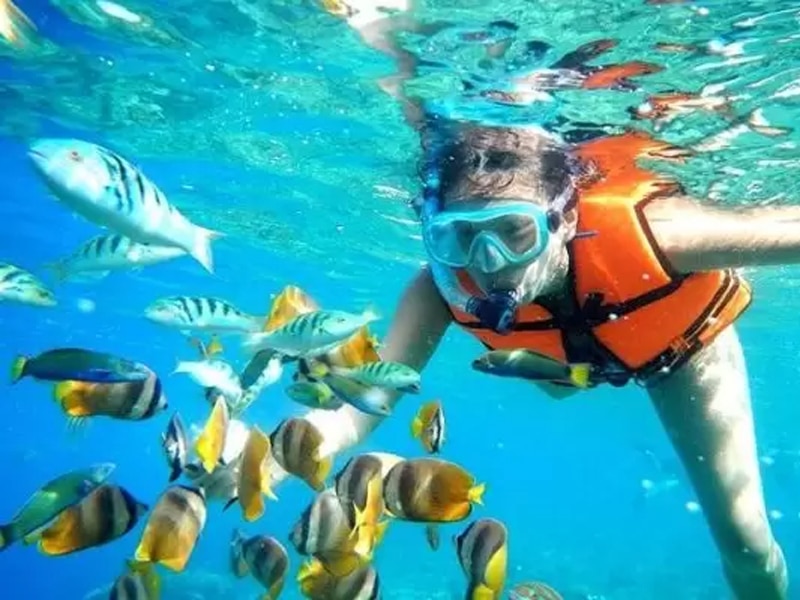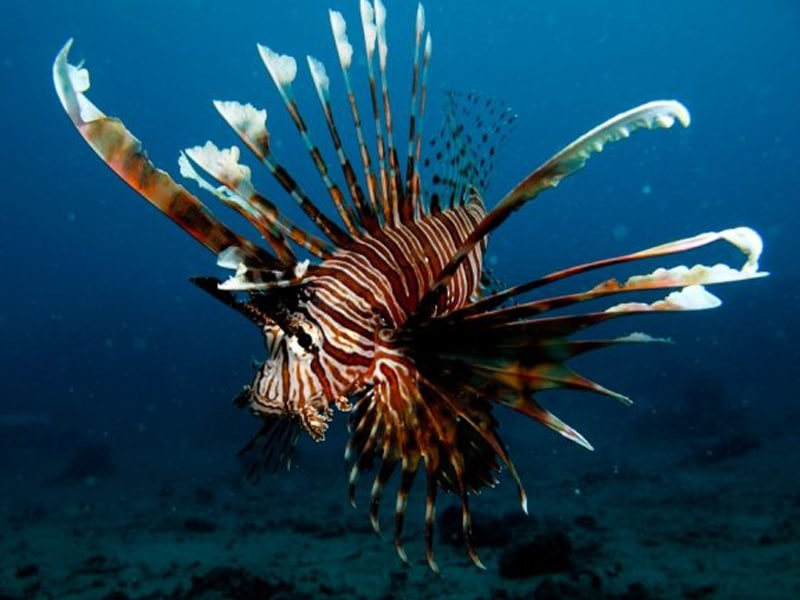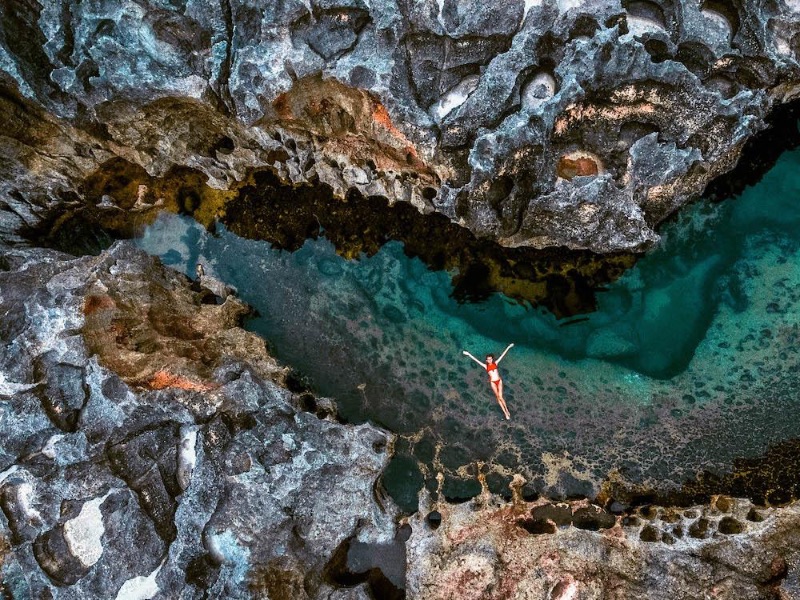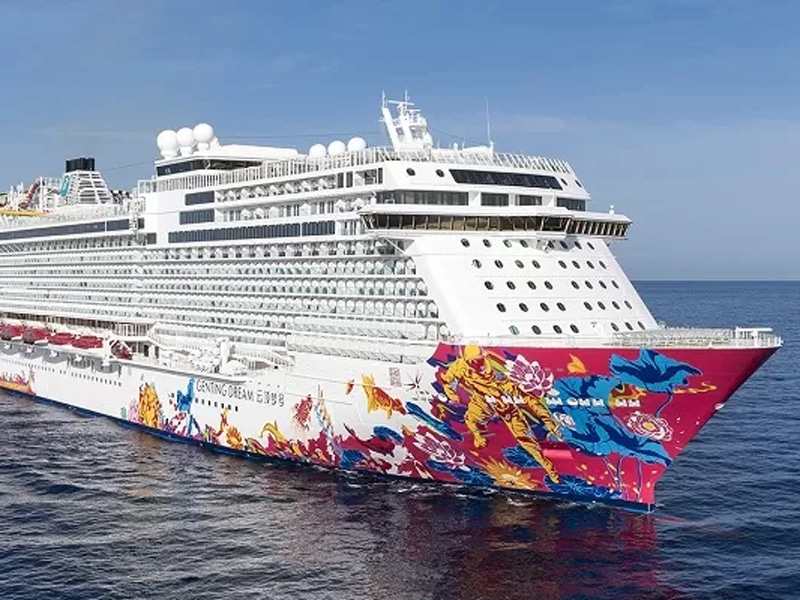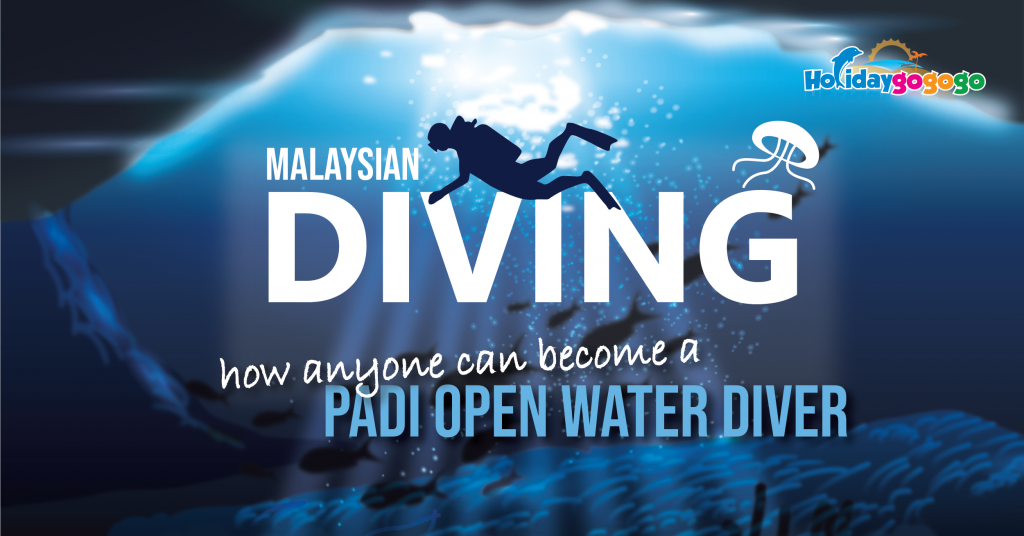
Learning to dive is an easy, straightforward process that can provide some of the most rewarding experiences of your life. It will forever change the way you see the world, both above and below the surface. If you’re in Malaysia, you’re in luck. Our country holds a reputation for some fantastic dive sites, with warm, temperate waters and healthy reefs.
Sounds good? Follow our step-by-step guide, where we’ll tell you how easily anyone can become a PADI Open Water Diver in Malaysia!
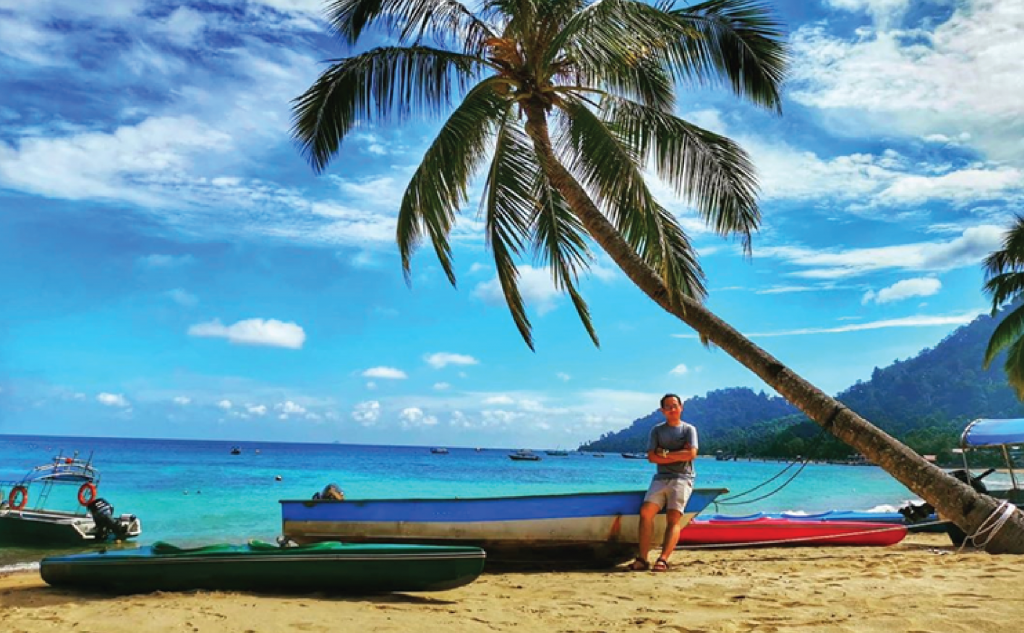
How Do I Become a Diver?
PADI Divers in Malaysia are required to undergo training under a certified PADI instructor and be certified themselves before going on any dives. PADI is the world’s leading scuba diver training organization that offers both recreational training and a few forms of technical training.
Step 1: Choosing The Right Dive Course
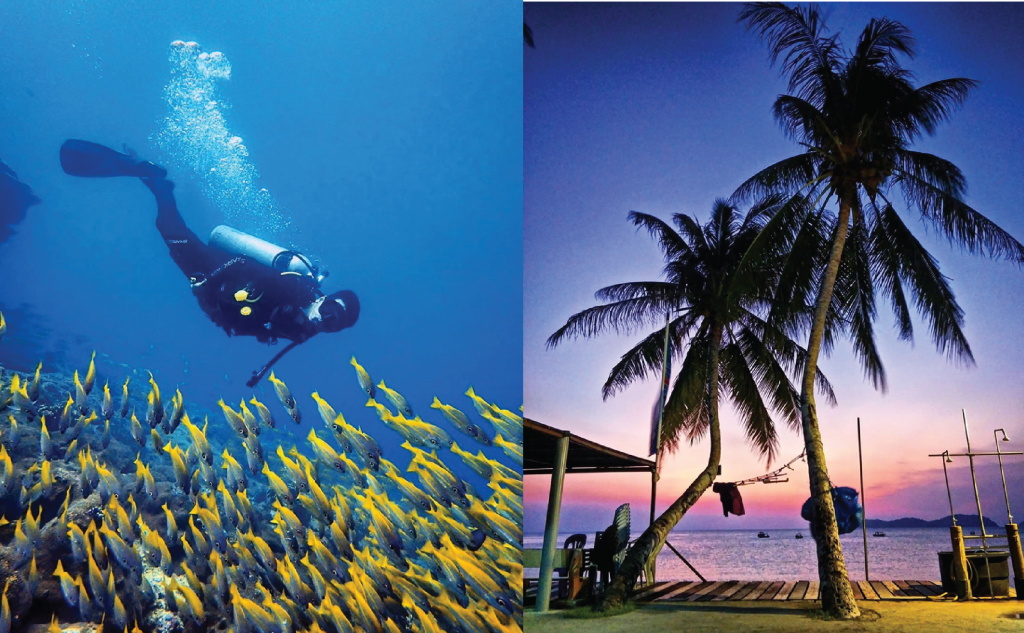
Dive courses start with simple certifications as prerequisites for more advanced levels of learning. For example, one would require an Open Water Diver certification before being allowed to take on Advanced Open Water Diver.
Everyone has their own preference and limits. Dive centres realize that and offer various certification options for anyone looking to become a PADI Open Water Diver in Malaysia.
If you’re interested in learning to scuba dive but are not ready to invest the money or time in a full certification course (or you just want to enjoy a relaxing, shallow dive on holiday), check out “discovery dives” (also known as fun dives). These usually comprise of one or more directly supervised open water dives that can be done to a maximum depth of 12 metres (39 ft), and are more suitable for those who do not have the time to commit to a full dive course. However, do note that these short introductory courses which typically last for one day are not to be confused with certification programs such as Open Water courses. Discovery dives can be counted towards further course progression in the future (much like credit hours), but are by no means a replacement for actual certification.
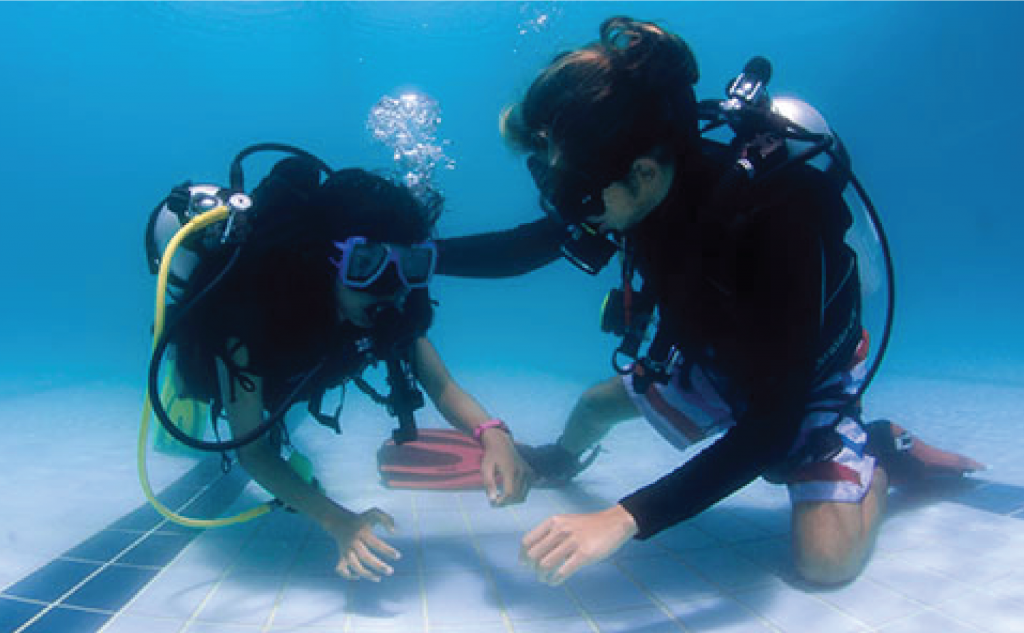
After that, there are the more advanced speciality courses that have narrowed-down learning areas, such as Wreck Diver, Deep Diver, Rescue Diver and more. These courses offer divers further avenues to pursue beyond fundamental recreational dives. Of course, all these courses require specific skills and certificates to be acquired before signing-up.
Diving as a Career
At the same time, PADI includes dive courses for those who wish to take it a step further to become an instructor or create a career out of diving. One of the most appealing aspects of the scuba industry is that it provides unique part-time employment opportunities in exotic locations around the world.
Becoming an instructor is a great achievement. However, it takes a lot of time and effort to build up the necessary prerequisites and experience. With that in mind, it might not be for everyone.
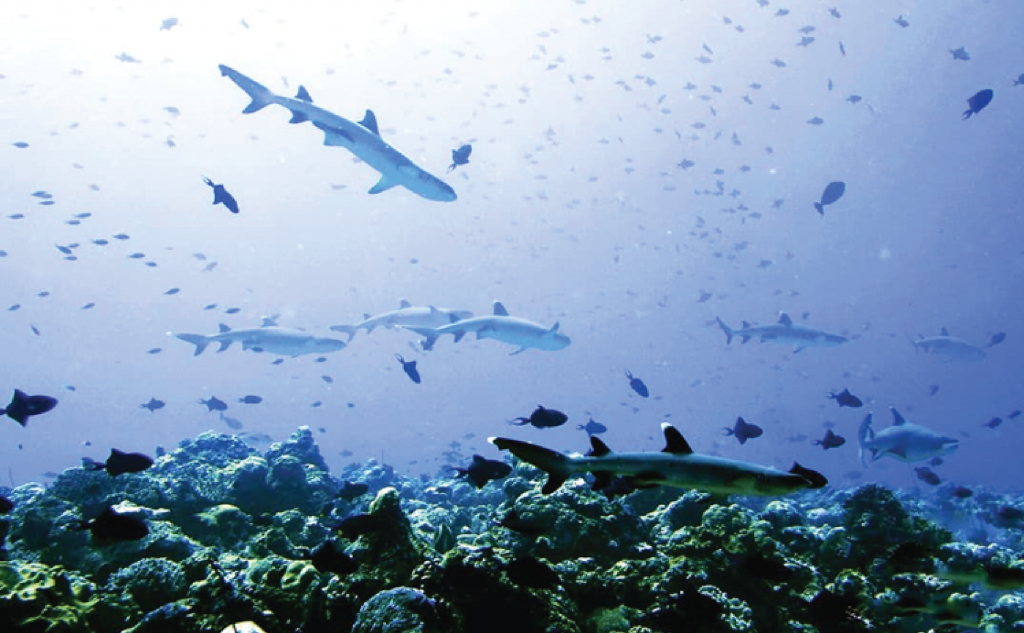
Regardless of which course you choose, you will be rewarded with a unique underwater experience like no other. Higher levels of diving proficiency will unlock more dive sites, and of course, more career options.
However, for this article, we’ll start with obtaining your very first entry-level certification for recreational diving purposes.
What is the PADI Open Water Diver Course?
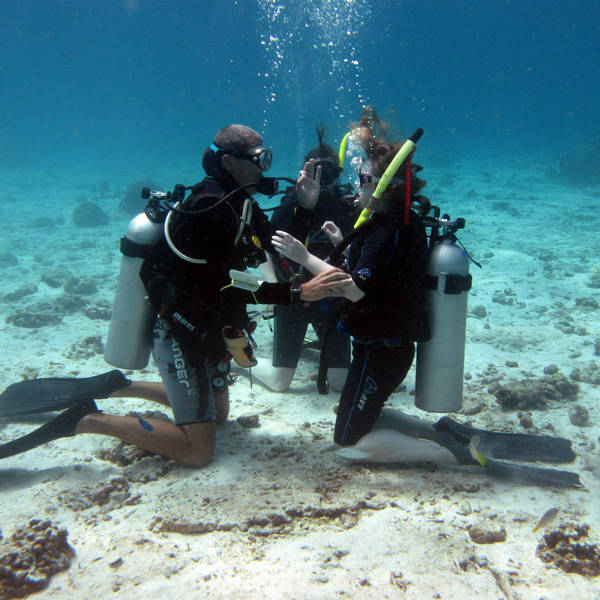
The PADI entry-level course is known as PADI Open Water Diver. It is commonly offered by dive centres in Malaysia. With this certification, you’ll be allowed to descend a maximum depth of 18 metres/60 feet, and are qualified to dive in conditions as good as, or better than, those in which you trained.
Earning a PADI Open Water Diver certification shows that you meet the minimum requirements for a dive. Dive centres and resorts require proof of this certification before they give out scuba equipment, refill your cylinders or help you book dive excursions. This is the entrance to your underwater adventure.
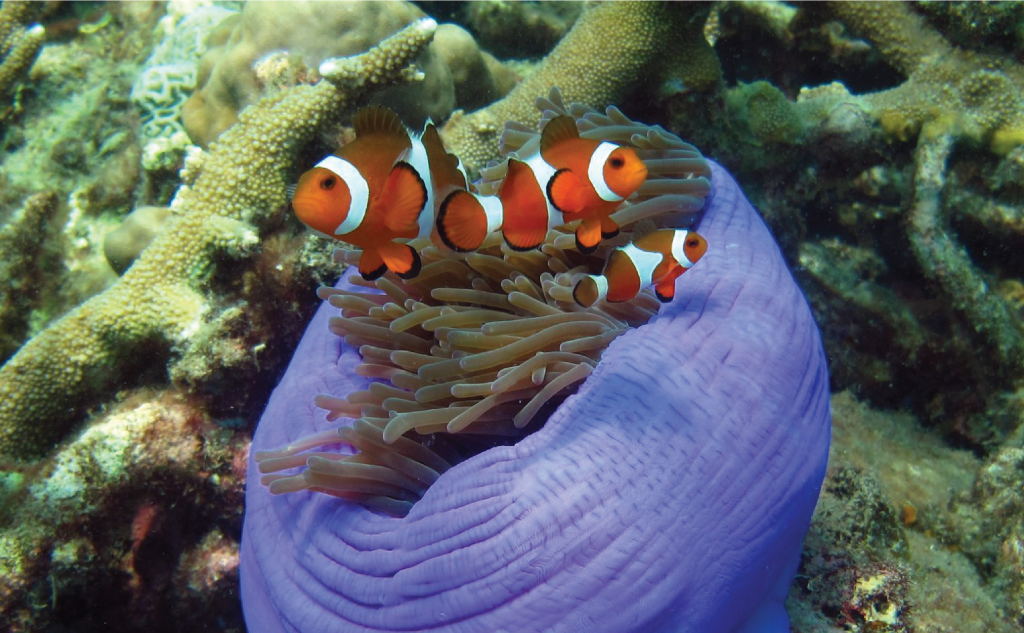
Step 2: Finding A Good Dive Centre
Once you have chosen the right course, it’s time to select the centre that will be looking after you throughout your learning process. Choose a dive centre and course that offers you a good number of practice dive time and pool or training sessions as well as classroom sessions. The key to diving is practice; it isn’t conducive if they aren’t putting you in the water enough and just focusing too much on theory instead. Don’t forget to inquire about the dive equipment you may be expected to have (usually the dive mask, fins and snorkel) and what scuba equipment they provide as part of the course or with a rental charge. You should also ask about boat fees.
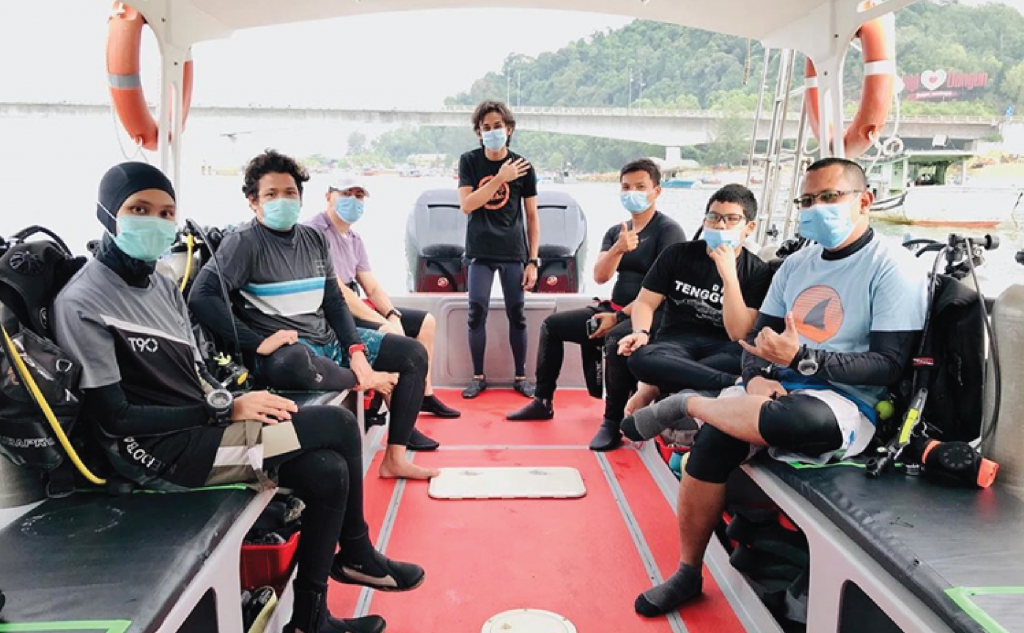
A Good Centre Cares For You
What you should really be concerned about is how well a dive centre takes care of you. Voice your concerns and questions to the owner and wait for their response. Did they brush it off? Did they show any kind of attitude? Did they get defensive? From the management’s behaviour, you can tell very quickly if the dive centre is run by professionals.
Also, check the reviews on social media and Tripadvisor. Read up on their instructors as your learning experience ultimately comes down to them, and not the centre.
Diving Means You’re Now Part of a Community
Many dive centres tend to cut off ties with you after your open water training. This is something we really frown upon. In our opinion, one of the best parts about learning to dive is that you are now part of a community of awesome people who share the same passion for the ocean as you do! A great dive centre will encourage you to be an active member and keep you involved in their community of divers.
Scuba diving is more than a hobby. It’s a lifestyle. Finding the right group of people to do it with will make it so much more rewarding and provide even more memories for you to cherish (solo diving is perfectly fine, too!). Find a dive centre that shares these values and begin your start off your diving journey on the right path.
Step 3: Meeting The Requirements
Before you begin your underwater adventure, first make sure that you meet the minimum requirements for the PADI Open Water Diver course in Malaysia.
Money
Rates for taking a dive course in Malaysia are comparable to other popular adventure and outdoor sports. Open Water Diver courses alone usually hover at a range of RM1,200 – RM1,300. However, it is not uncommon for local dive operators to offer comprehensive all-in-one packages that include accommodation, meals and water transport. Of course, these are more expensive than just taking the course alone but are good value for those looking for a dive-centric vacation.
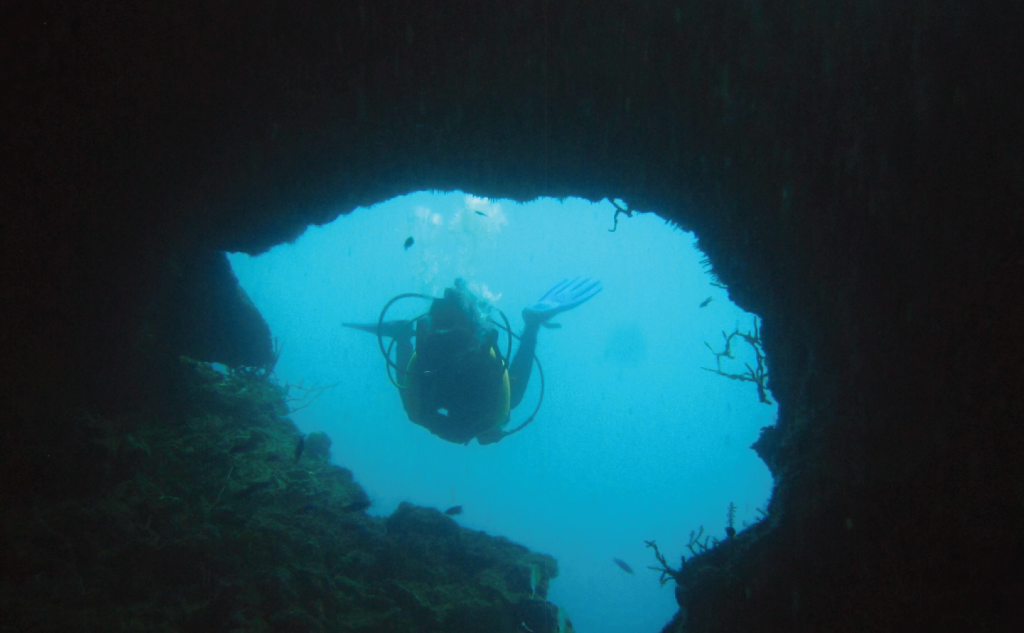
Learning to dive might seem expensive on the outset, but keep in mind that you’re paying for an education that lasts a lifetime. At the end of your training, you’ll receive a certificate that allows you the freedom to dive anywhere in the world (few activities can offer that). This is an experience that will transform your life and the way you view the world around you. Craft new experiences and immerse yourself in a genuinely spectacular out-of-this-world environment.
Minimum Age
This section will be relevant to two kinds of people that are either: interested in teaching their children and looking for the best courses for them; or wondering how much longer before they’ll able to dive.
The minimum age to join the Open Water Diver course is 10 years. Children between 10-14 years old qualify for the Junior Open Water Diver certification, after which diving is only allowed under another adult’s supervision.
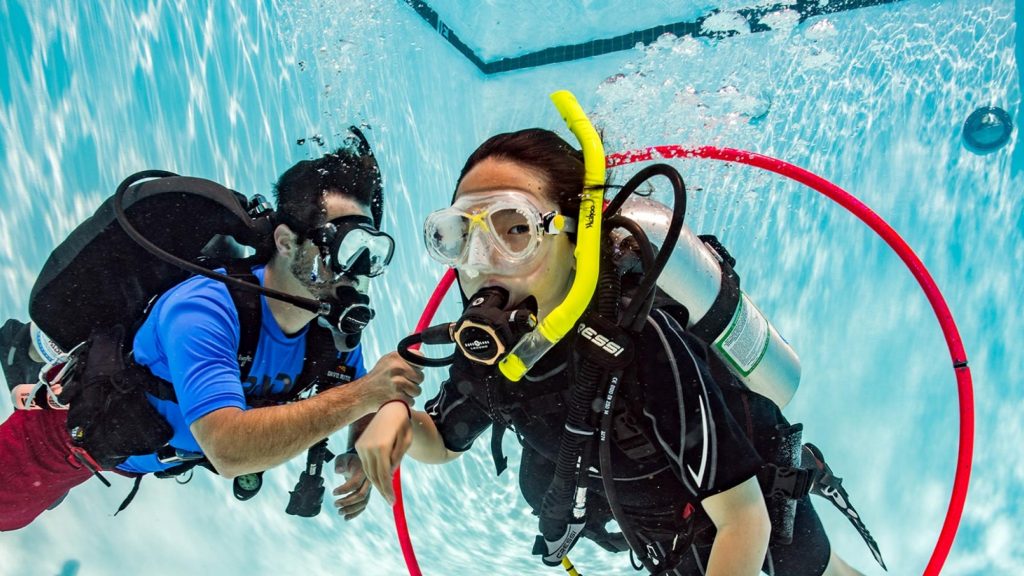
For children ages 8 and below, PADI also offers other options such as the PADI Bubblemaker Program (familiarize with scuba equipment in shallow waters) or the PADI Sealteam Course (action-packed fun in a pool by completing exciting AquaMissions).
Health Requirements
The general hazards of diving are much the same for recreational divers and professional divers, but the risks vary with the diving procedures used. These risks are reduced by appropriate skills, suitable equipment, and of course diver health.
Because of this, PADI courses require diver health conditions to be addressed beforehand in a medical questionnaire.
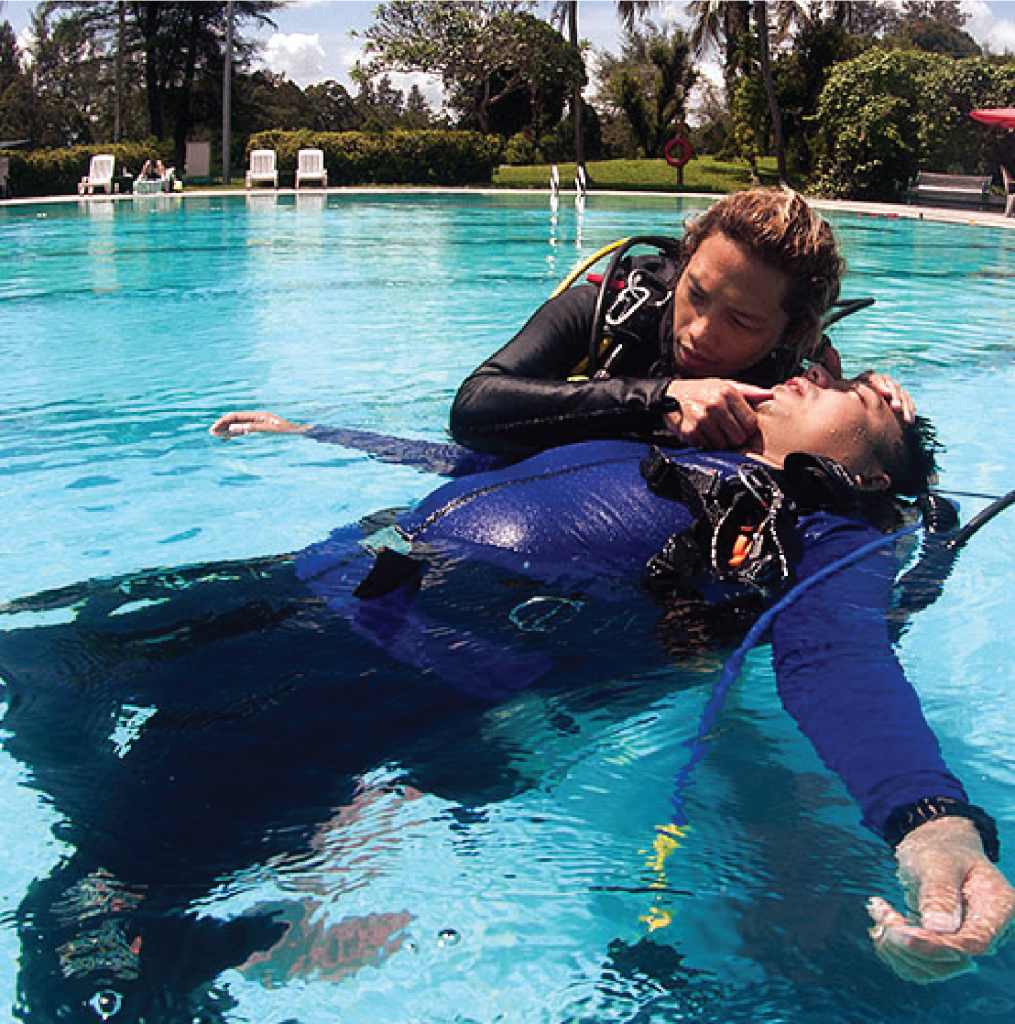
Physical conditions that may not be bothersome, or even noticeable, in everyday life may be dangerous underwater. Weak lungs, ear equalization issues, as well as allergies and certain diseases, can all become life-threatening underwater.
The questionnaire determines if you should be examined by your doctor before participating. A positive response to a question does not necessarily disqualify you from diving. It merely means that pre-existing conditions may affect your safety while diving and you should seek the advice of medical professionals prior to engaging in any training activities.
Remember: A healthy diver is comfortable in the water and most importantly, safe.
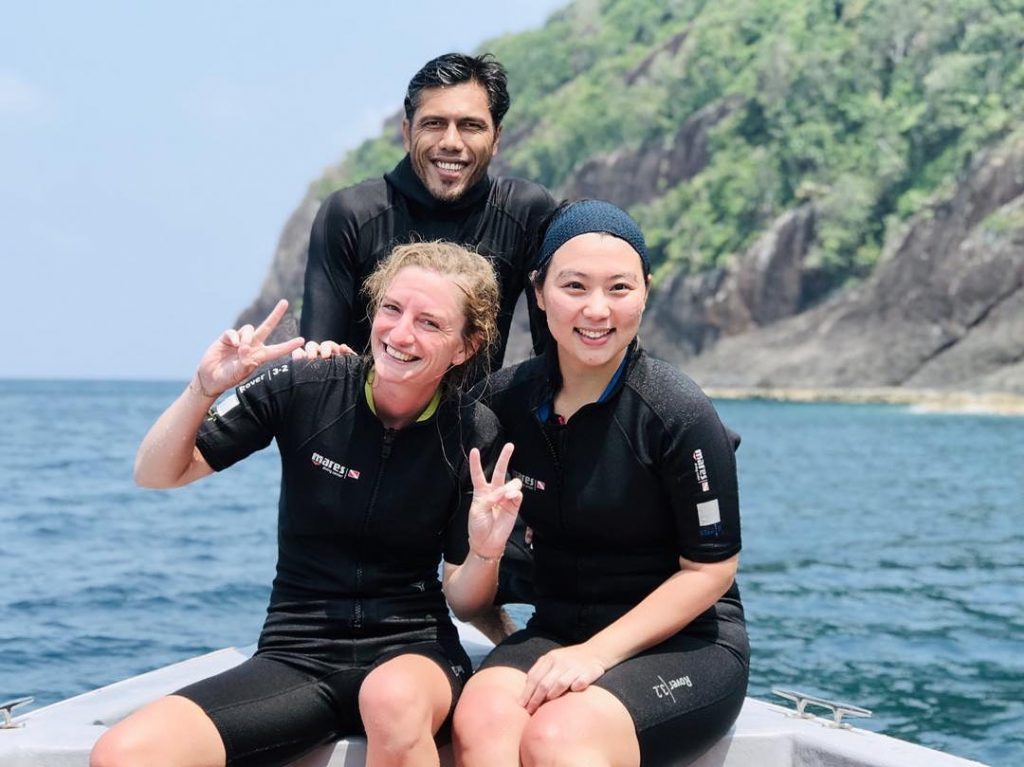
Fitness tests will also help determine your physique underwater. Basic requirements include being able to swim 200 meters or snorkel 300 meters (in mask, fins and snorkel) and floating in water too deep to stand for at least 10 minutes. There are no method restrictions for this. Divers with disabilities need not worry as many adaptive techniques allow individuals with physical challenges to meet these requirements.
We live in lucky times. Some requirements have disappeared currently thanks to new technologies in diving gear. For example, precision masks make it possible for those with poor vision to explore our underwater world. Older divers with higher sensitivity to the cold need not fear as thicker neoprene suits or dry suits are common nowadays.
Time
The PADI Open Water Diver course takes 4 days to complete, it consists of 2 half days and 2 full days of classroom and diving (theory and practical). However, this time might not be the same for everyone as the course is designed to be flexible and based on individual performance. If you’re travelling and are limited by time, it’s possible to shorten the duration of the course if you complete the theoretical section via e-learning. This is called PADI eLearning and you will complete the entire theory, including the final exam online. Get in touch with your tour dive operator to learn more.
Do note that the emphasis here is not on the duration, but instead on your capability as a diver. The PADI Open Water Diver certification aims to equip you with what you need to know to competently navigate your way underwater, regardless of how long each individual takes to complete it.
Step 4: The Learning Process
The PADI Open Water Diver course consists of three learning phases:
- Knowledge Development (online, independent study or in a classroom) to understand basic principles of scuba diving
- Confined Water Dives to learn basic scuba skills
- Open Water Dives to use your skills and explore!
You’ll have to familiarize yourself with facts, principles and concepts – and dive skills including techniques and methods. PADI Open Water Diver uses videos, audio, graphics and reading to help you learn, plus short quizzes that let you gauge your progress, and then offers a review of anything you happen to miss. Once you’ve got the basics covered, you’ll get the chance to develop dive skills during actual dives with a PADI Instructor.
- Knowledge Development
This is the theoretical learning part of the PADI Open Water Diver course in Malaysia. Knowledge Development can be conducted either online, via independent study or in a classroom setting. This part of your education will cover all the basic principles that you’ll need to know about scuba diving, such as:
- The dive planning process
- Choosing the right scuba equipment
- Underwater signals and other diving procedures
All of this will be handed to you in the PADI Open Water Diver Manual or by using the PADI Open Water Diver eLearning. Alongside the reading material, you’ll watch videos that preview the scuba skills you’ll practice in a swimming pool or pool-like environment. In addition to the videos, your instructor will demonstrate each skill for you. Some centres incorporate shallow dives in tandem with theory classes for students to apply what they have learnt.
At the end of each chapter, learners will be quizzed on the material to ensure full understanding. Along the way, feel free to consult your PADI Instructor for things you don’t understand. At the end of this section, there will be an exam that ensures you have gained sufficient knowledge of scuba diving basics and are ready to move on to practicals.
- Confined Water Dives
Once you’ve finished with theory lessons, your instructor will bring you out for your first actual dive! Dive centres on islands will usually use a calm beach in conjunction with a pool to carry out this part of the training.
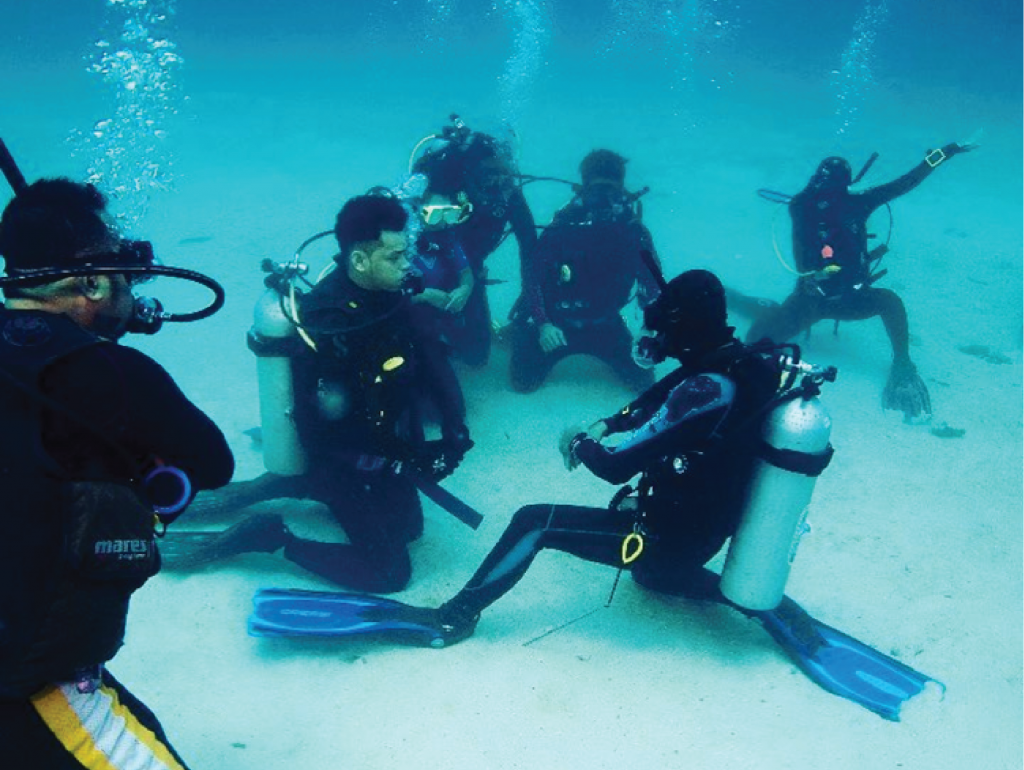
The basic scuba skills you learn during your certification course will help you become familiar with your scuba gear and become an underwater explorer. Some of the essential skills you learn include:
- Setting up your scuba gear
- How to get water out of your mask
- Entering and exiting the water
- Buoyancy control
- Basic underwater navigation
- Safety procedures
Your instructor will guide you through all these skills until you become comfortable with them. After that, it’s off to open waters.
- Open Water Dives
This is what students yearn for. After your confined water dives, you’ll be brought to open water, where your instructor will lead you through 4 open dives (usually over two days). These dives will give you your first glimpse into the underwater world. You’ll get the chance to apply the techniques you’ve learnt in your practicals while falling in love with the beauty of the marine life around you. You’ll practice the skills with your instructor until you’re completely confident and can perform them with ease in a real diving situation.
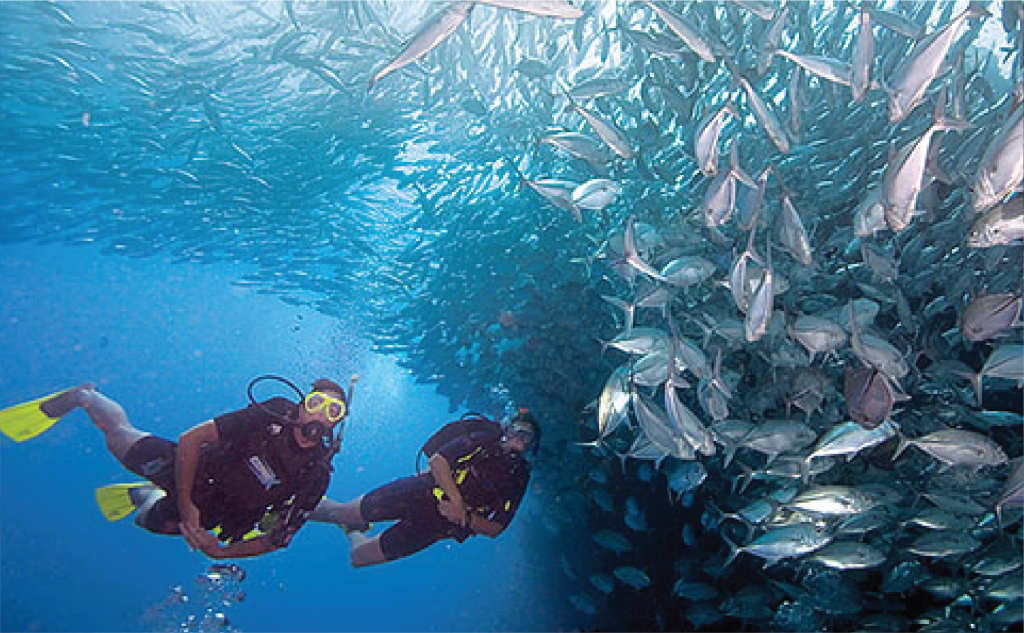
Step 5: Acclimatize
Being underwater changes the environment around your body and it will react in sometimes funny ways. You might have to expect some changes:
Breathing
Breathing via a scuba regulator feels weird. This is because your body might not be used to breathing normally underwater. This goes again what we were taught while learning to swim (holding your breath while underwater and surfacing to breathe) so it’s normal for it to feel strange at first.
It’s best to practice breathing through the regulator above water first until you’ve become comfortable with breathing through the mouth. A good trick is to put on the mask, slowly exhale and lower your face into the water as the breath is leaving your lungs. This can trick your body into breathing normally after the initial inhalation.
Your instructor will tell you, but when it comes to breathing underwater, the most important thing is to exhale fully after each breath. This prevents the feeling of lack of air in your mask, which can often lead to hyperventilation.
Movement
New divers will be thrilled to feel lighter when underwater. Who needs a diet, right?
One of the best parts of diving is being able to feel weightless. In an environment where gravity seems to have taken a step back, divers have ultimate freedom when it comes to movement. They can move three-dimensionally in up, down, left and right positions. It’s like being in space but surrounded by fishes instead of asteroids.
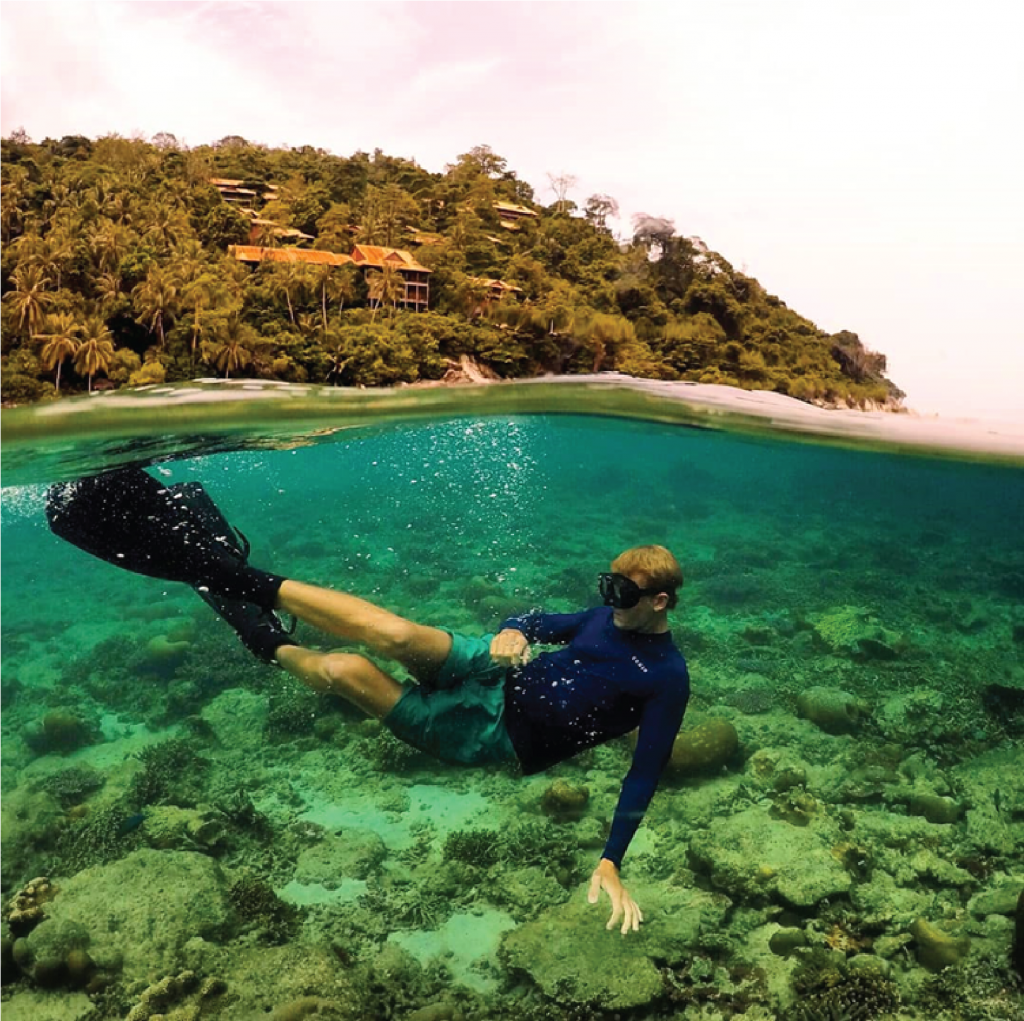
Unfortunately, this can be a bit disorienting for some.
The trick lies in relaxing your body and letting the water and your buoyancy compensator support you. Learn to move with water instead of against it. Your first thoughts might be to continually move around to stay in a single spot underwater. The truth is you don’t have to. Relax your body and marvel at everything around you while physics does its job.
Vision
Traditional scuba masks can interfere with a diver’s peripheral vision. Claustrophobic divers might feel restricted as a result and may experience symptoms. Fortunately, as with most aspects of scuba diving, new divers quickly acclimate to their limited field of vision. Give it time and you’ll be feeling at home with your new pair of ‘eyes’ in no time.
Light refracts in different ways underwater. As a result, depth perception is slightly affected. Objects may appear 30% closer than they actually are. You might wonder how you can look at the tiny gauges attached to your wrists. This is how!
As you dive, your brain will adjust to the magnification. With enough practice, you will be adjusted within seconds of entering the water. A good way to hasten the process is to regularly interact with your environment by touching it. Touch objects such as the pool floor, wall, or diving pals around you. This will help you to tell the difference between how far away objects look and how far they actually are. But remember to refrain from touching the marine life.
Bladder
The human body reacts in unusual ways to an underwater environment. Water temperature that is lower than your body’s may result in a physiological reaction known as cold water immersion diuresis. Urine is synthesized faster, leading to strong urges to urinate.
Understand that this is completely normal and not unique to you alone. Simply end the dive if the need becomes too great. To tell you the truth, on ocean dives, many divers simply pee in their wetsuits (don’t do this in the practice pool, though)!
Step 6: Done With Training. Now What?
Provided you have been diligently doing your homework and complied with your instructor during dive sessions, you will be awarded the PADI Open Water Diver certification. You now possess a PADI certification card that certifies you as a diver in Malaysia and anywhere around the world.
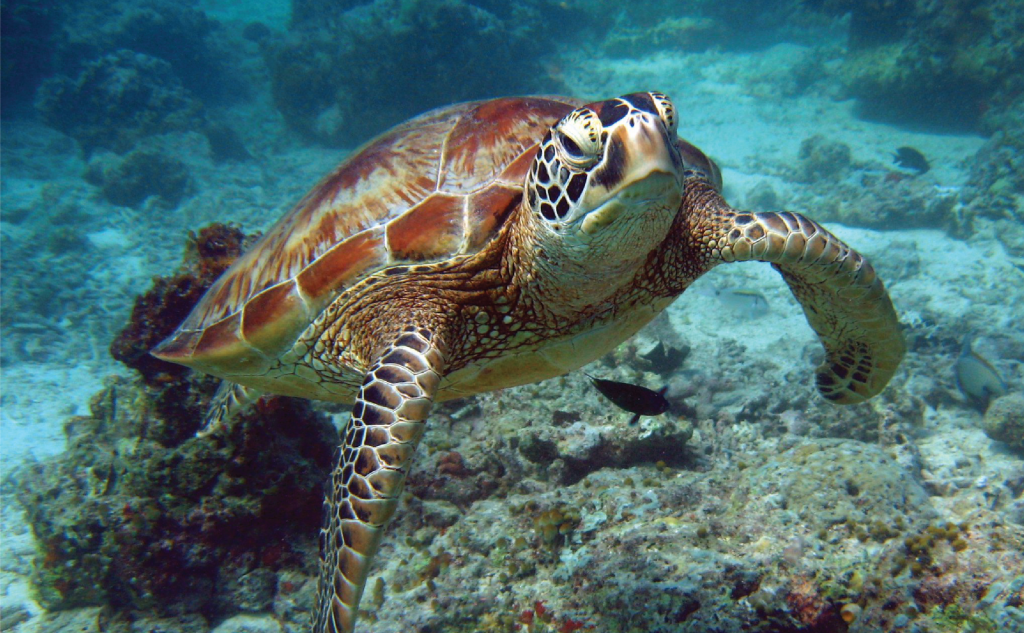
Now what? You might be feeling a little nervous or overwhelmed. It was a fun weekend, but now you’re out alone with the vast ocean before you. But fret not. A little nervousness helps keep us on your toes! Here are a few of our suggestions to get you going on your vast diving adventure:
Join a Community
Having like-minded people around you, sharing the same passion and lifestyle is a huge part of making diving feel alive. Of course, we hope that you’ve found this community within your dive centres. Maybe through their Facebook page or a Whatsapp group? But if not, don’t worry as a little research can turn up diving communities you didn’t know even existed near you! You’ll be surprised at how many PADI Open Water Divers there are in Malaysia. You’ll find advice on just about any subject related to diving, make life-long friends, past classmates and most importantly, even find your next dive buddy.
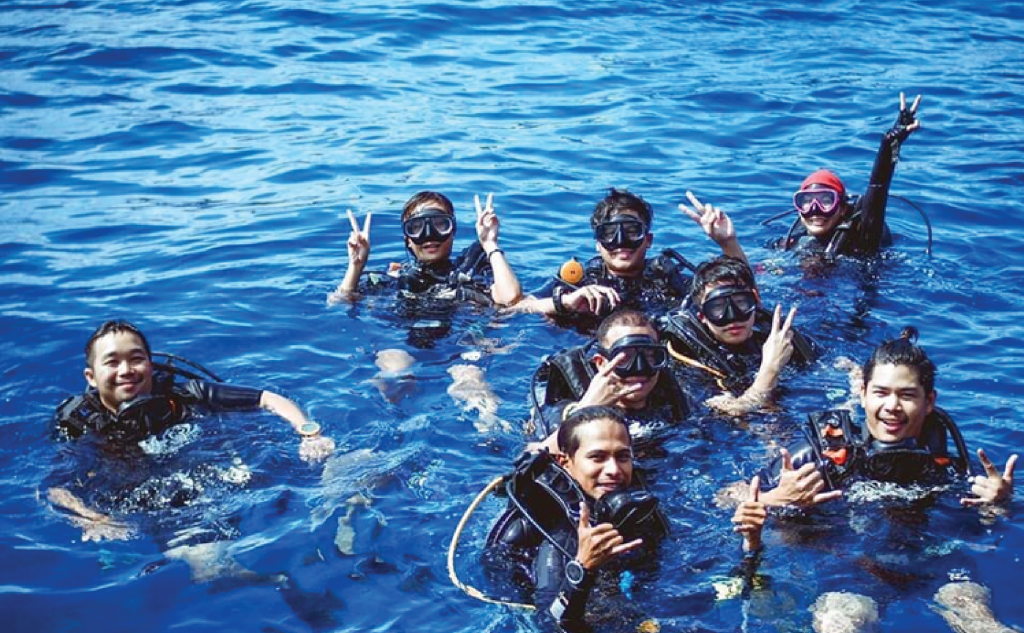
If you are unable to do this, join an online dive community like ScubaEarth, take out a few dive magazine subscriptions and immerse your self in scuba diving as best you can. It’s a poor second to getting wet with a gang, but it’s one way to keep your enthusiasm up and your dive knowledge growing.
Just Dive with a Buddy!
Grab a dive-bud and just go for it! It’s usually a good idea to do some follow-up dives where you obtained your certification. You’re fresh off your instructor’s predive briefs and local insights, making it familiar ground and a place that you’ll be more relaxed in. You’ll be surprised at how completely different the entire experience is when you’re exploring on your own. Get your buddy, your gear, and everything else you need. You can rent equipment if you don’t have any. Just remember to not let too much time pass without capitalizing on your fresh new skills.
In fact, Malaysia has many beautiful dive sites to offer new divers. East Malaysia is home to gorgeous islands with equally spectacular underwater landscapes such as Sipadan Island, Mabul Island and Layang-layang Island. Those on Peninsular Malaysia can visit Lang Tengah Island, Redang Island, Perhentian Island and Tioman Island, where thriving coral reefs and some fantastic underwater sights await. Swim alongside barracuda vortexes, reef sharks, turtles, mantas and even whale sharks if you’re lucky. With its calm waters and magnificent marine life, becoming a PADI Open Water Diver in Malaysia is not hard to accomplish.
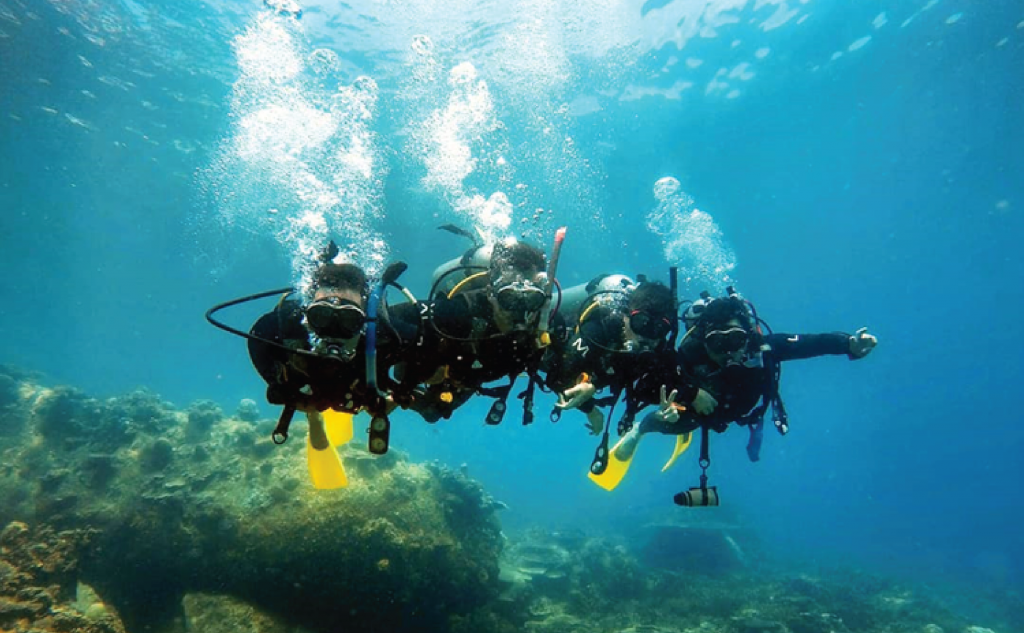
Take Your Education to the Next Level
Want to learn more? Check out the PADI Advanced Open Water Diver Course in Malayisa. The course is designed specifically to help divers, from Open Water on up, build skills and competence in a variety of dive specialities.
This is also a great way to get introduced to new dive sites and conditions that will increase your dive site options later. Think about your skill level now and just imagine how you’ll feel with five more dives under your belt. Gain the experience and progression will come naturally.
Some BONUS Tips:
Before we end this article, we thought we’d share some of these extra BONUS tips that are just too useful to keep to ourselves! These will help you become a better PADI Open Water Diver in Malaysia:
- Refrain from going to altitude (this includes climbing and flying) within 18 hours when doing multiple dives, as it increases a person’s risk of suffering from decompression sickness. Always give yourself some time after a dive-cation before hopping on a plane back home.
- Proper, complete ventilation of your lungs is key to better breathing during dives. You can achieve this by breathing from your diaphragm. And remember to breathe out fully before inhaling again. Slow, long exhales. Air left in your lungs is waisted air. It contains high amounts of carbon dioxide which tells your body to breathe more intensely, leading to shallower breathing and higher air consumption.
- Is your mask constantly fogging? Remember that fogging is the result of any form of grease or gunk in your mask, which forms droplets. A clean mask is less likely to fog. Soap or gelatin can also break the surface tension of water and prevent this from happening. If you find yourself without either of these, you can use your saliva but to lesser effect.
- For people with higher sensitivity to rocking boats, try to get a seat at the front, especially if it’s a small boat. It will make your ride much smoother and you’ll arrive at the dive site raring to go!
- You might see some dive centres in Malaysia offering SSI licences instead of PADI while telling you that they are the same. This is not true. Even though SSI and PADI are comparable licenses, SSI is not PADI and this scam allows dive schools to maximize their profits. To be safe, we advise you to examine your study material (has to be PADI branded) and make sure that the license you get is actually from PADI.
We’d love to hear from you. Let us know what you think of our Step-by-Step Guide: How To Become A Certified PADI Open Water Diver in Malaysia. Share with us your pictures, memories or stories and we might just post them on our site!
You can reach us via Whatsapp or Facebook.
Image Credits: @kiatkee @ vincent_sealife @ divecleric @ wan_ikbal_official | Flickr: TimothyWillis | havehalalwilltravel.com | vikingscuba.asia

